Peaks Challenge Cradle Mountain 2015 recap
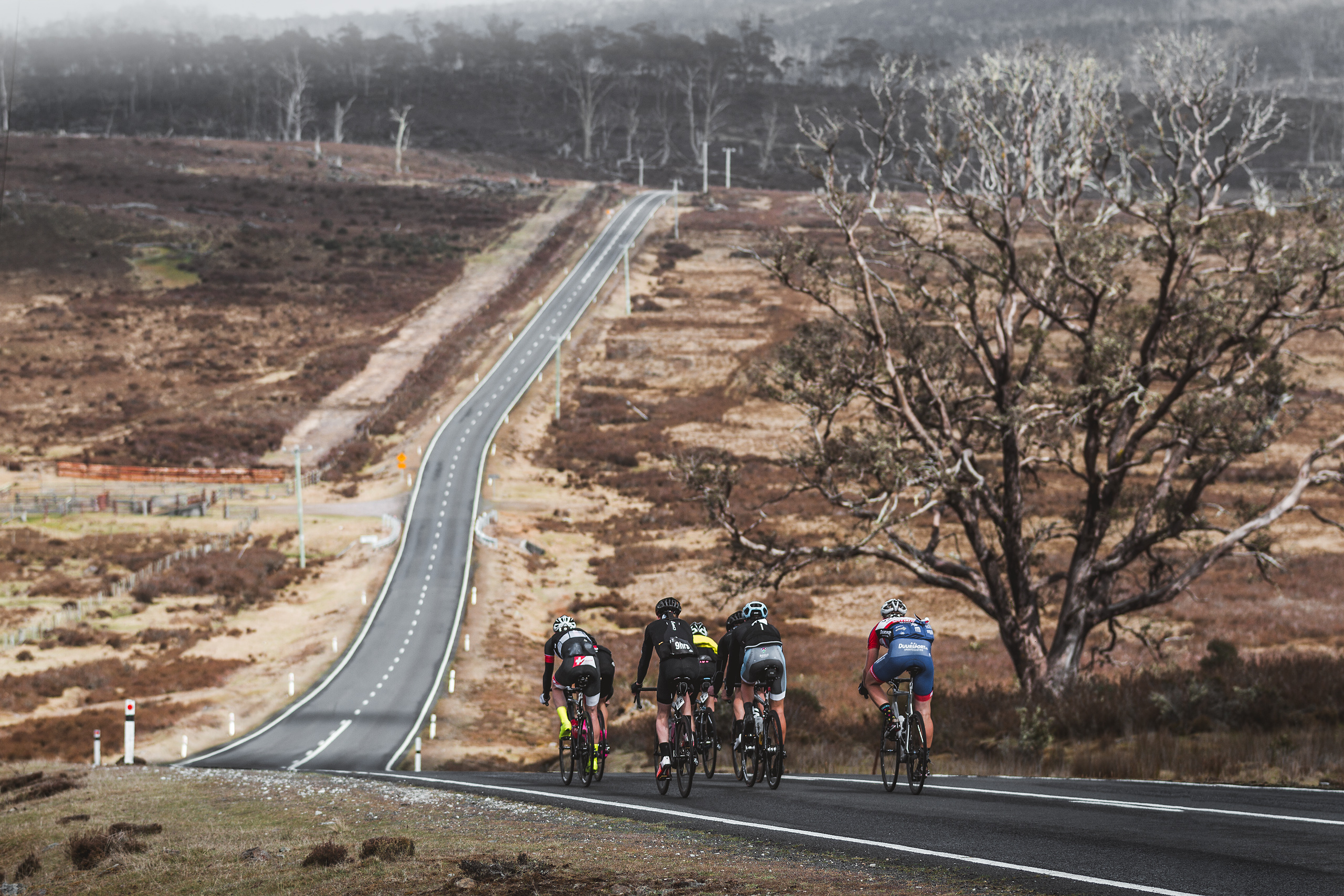
Most riders can take on a challenge, but few take on the epic ones. Pushing themselves to the limits of their cycling ability. In 2010 our first riders took on the peaks in Victoria's rugged High Country. Riders were pushed to their limits and beyond, but still rose to the challenge. The legend of the series was born. It's not a race – it's much more than that. It's the ultimate personal challenge.
On Sunday 1 November, 550 riders took part in Bicycle Network’s first Peaks Challenge Cradle Mountain. Iain Treloar recaps the third ride in the Peaks Challenge series for 2015.
Peaks Challenge Cradle Mountain is not just one ride. It’s hundreds of personal ones, each an epic narrative of a massive day on the bike. There is no easy ride on a Peaks Challenge; every kilometre is hard earned, splitting every story into 235 chapters of pain and triumph, sweat and tears.
Bicycle Network’s Peaks Challenge series was founded on adversity, with the first edition a brutal run through the Victorian high country. It was cold, wet and of such unprecedented brutality that few were able to adequately prepare themselves for what lay ahead. The attrition rate was fierce; only 57% of riders finished, and from that event grew a mystique that spawned a series. The Cradle Mountain edition of the ride—the third and final of the year, and first running of this course—is of that spirit. It’s not a lazy Sunday spin, but a Herculean feat attempted only by the brave, foolhardy, or (more likely) both.
We roll through the gantry on the Devonport foreshore under a grey sky, three waves of a couple of hundred each, quickly settling into a rhythm. There’s something awe-inspiring about the sight of a massive bunch of riders, lights flashing as we pierce the gloom and leave the town. Devonport’s not big, and it doesn’t take long to feel like we’re a way from civilization. With the Mersey River by our left shoulders, we push into the unknown.
After a flat prelude, the low-hanging cloud shifts enough to reveal the ranges we’ll shortly be riding through. We travel a lonely, straight road through pine plantations, with sheets of mist weaving through the forested hillsides. At 48km, we’re onto the first of the designated Peaks of the day (although there will be peaks upon peaks within this ride that don’t score the formal designation), and start ascending. The gentle chatter of the preceding hour and a half stops and an eery silence descends. We each disappear inside ourselves and focus on our breathing, our gearing, our legs and the road rearing ahead of us.
This first climb—Union Bridge—is relatively brief, a kind of entrée to what’s to come, but it sets up the next few hours. Brief synopsis; undulating hills, steep climbs, sketchy descents, dampness, mist, silence, pain. It’s the descent that finally breaks apart the thinning group that I’m working with. The roads are slick, the corners tight and the cambers unpredictable, and the only way down is at your own pace—the slower the safer. By the bottom, there are no more pelotons to work with, and the road through the back of beyond is dotted with groups of two or three pedalling through their own quiet purgatory. It’s like that for the remainder of the ride.
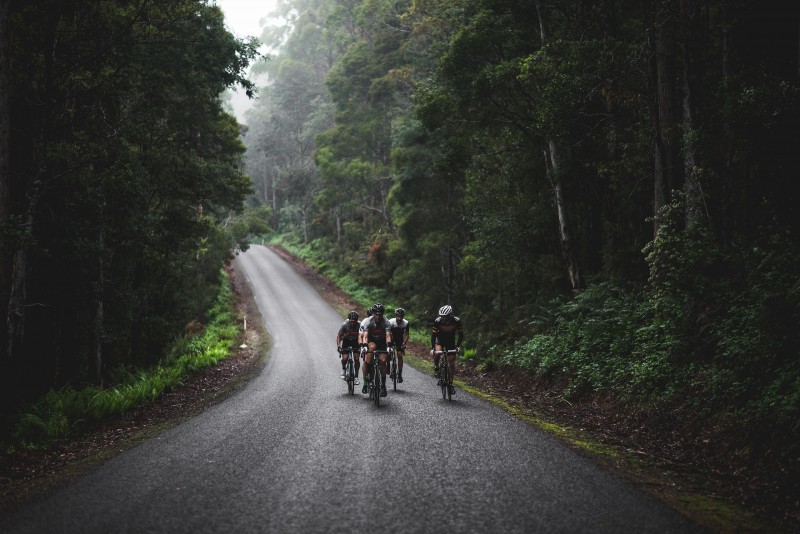
The second timed climb, through Echo Valley, is tougher. It never lets you get a rhythm, with flat bits into pinches over 10%, and although the stats are a relatively tame 10km at 3.9%, it feels worse. It’s an incredibly beautiful road through lush rainforest on the lower slopes, with the road curving around the side of the range; through the trees up its slopes, there’s the occasional glimpse of riders, showing us the path we must still take. As we get higher the fog thickens. By the top of Mount Round and the waiting rest stop, visibility is down to about 50m and silhouettes of riders suddenly loom from the mist and disappear again. Each rider moves forward in their bubble of isolation, punctuated only by the sound of a gear change or swear-word up or down the road.
The descent’s another steep and technical one, but by the time we reach the hairpins that we’ve been warned about at least visibility is improving. The downside is that the mist and drizzle of the past few hours means everything’s damp and will stay that way for the rest of the day. We take it easy down the descent, over the bridge and into the third climb of the day, Cethana to Moina.
It’s a hard climb, about 5km of 8% overall. The sun finally makes an appearance, bringing with it a feverish warmth that’s difficult to dress for. After what seems an eternity of one painfully ground-out pedal stroke after another, we summit at Moina, unclip and sort through our valet bags to refuel.
The clock keeps ticking, and it’s far too easy to fall into the trap of tarrying too long at the rest stops. But by distance if not climbing, we’re less than half-way through the event, and it’s time to keep moving. The most scenic part of the ride is still to come.
There are certain landscapes in Australia that are an indelible part of the representation of the country. Tasmania’s Cradle Mountain is one of these. It’s an otherworldly, jagged thing softened by the still waters of the Dove Lake nestling at its base. We catch glimpses of it on our left as we pedal along rolling roads through stunted alpine growth. The road is slow and rough, and it’s only on the way back that you realise how much climbing you’ve done. At the time, it just feels like your grip on a coveted finisher’s jersey is slipping from your grasp.
At 134km, we reach the Cradle Mountain Visitor’s Centre, and the 10km of exciting roads out and back to Dove Lake. A wombat snuffles about peacefully beside the road, and I realise it’s the first time I’ve seen a non-roadkill one in the wild. I’m stoked – what with the baby cows and llamas from earlier on it’s turning into quite a safari. But there’s no time to stop and meet this local; the road is demanding, technical and narrow. Cradle Mountain reels us in, and after a final steep pinch we’re at the Dove Lake carpark and the outermost point of our day’s ride. It’s a view everyone’s seen a hundred times in calendars and adverts, but it’s impossible to be blasé about it when you’re there. We unclip, fire off a few selfies, and for as long as we can justify, pause to reflect on the fact that we got ourselves there, by our own power, and that that is pretty bloody awesome.
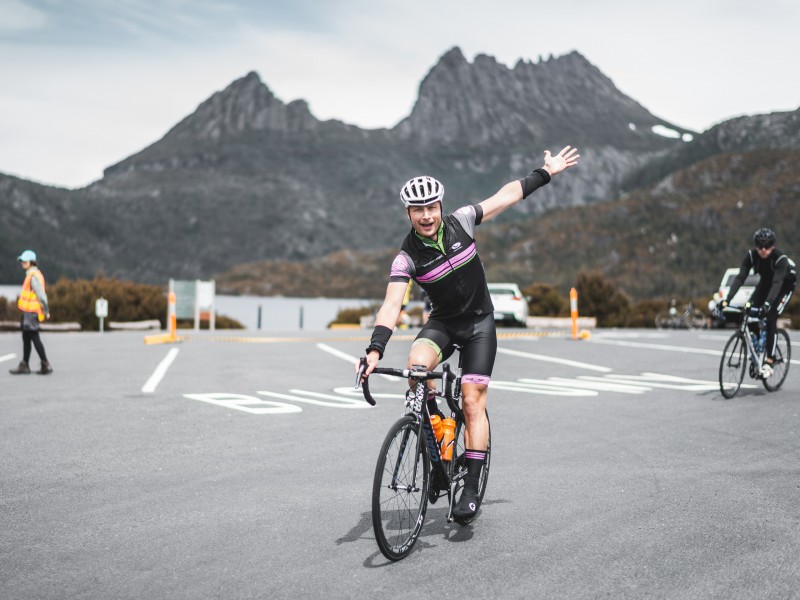
We ride back to Moina along the same road, and it’s just as gorgeous the second time (apart from some of the climbs, which are fleeting nightmares, happily surpassed). By the rest-stop, we’ve clocked up 178km and the worst of the climbing, but in a cruel twist, the worst climb is still to come.
Spellmans Road is a little used rural thoroughfare, itself accessed up a challenging gravel-edged climb that we aren’t expecting or emotionally prepared for. It’s the kind of road you suspect sees a few cars an hour, and is of minor importance to the region. It’s the kind of road that is, now, notorious in bunches across Australia, and will become part of the collective mythology of the Peaks Challenge series, like Henri Roberts Drive and WTF Corner. Like each of those, it’s a symbol for what Peaks Challenge represents—a logic-defying bit of road that takes your mind to some very dark places.
The descent to the start of the climb would be a doozy if it didn’t have so many sketchy corners on it. But it does, and the only option is to stay hard on the brakes all the way down. There’s no chance to carry speed onto the start of the climb, which rears up from a bridge at gradients exceeding 22% for the first kilometre. We’ve all heard about this, and many riders have been out to recce it. It goes for longer than you’d expect, and after easing to a comparatively blissful 13% or so, it’s back up again. And again. The worst of the pain probably only lasts for, what, 15 minutes? But it feels at once like 5 minutes and 50, stretching orderly time into something altogether more elastic. I was expecting to struggle to get up it, but with a compact crankset and a 32 on the back, I’m stubbornly proud that I didn’t stop and I didn’t walk. I sure needed every bit of assistance from the gearing I could get, though.
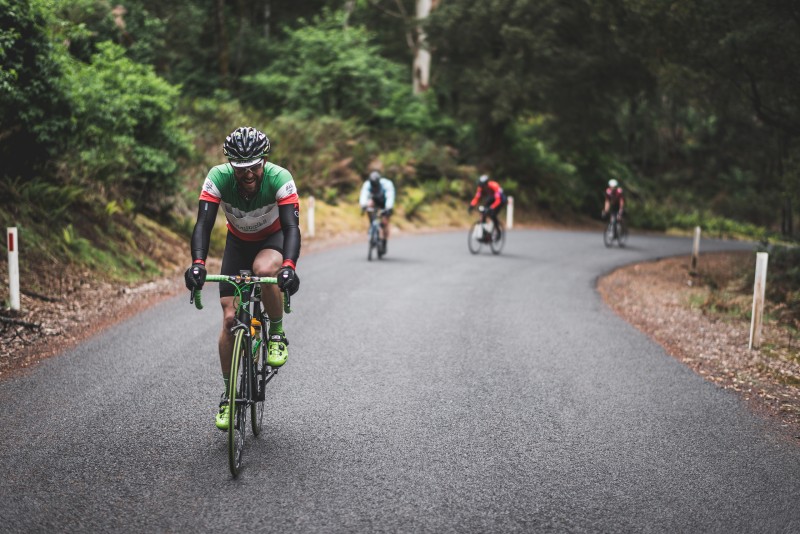
With Spellmans out of the way, there’s palpable relief as we roll ever downward through the fertile green hills. Rich potato-growing fields replace the wild bush of earlier in the ride, and at last there are predictable, flowing descents that allow a bit of speed. I grab a Coke at Sprent, take a moment to let the other riders there know that they’re far enough ahead of the Lanterne Rouge to be OK, and hammer down to Forth, at sea level. Now, the great thing about sea level is that it’s where the ride finishes. Unfortunately, after Forth there’s a big hill in the way, a couple of kilometres long, to give a final jab. I suspect that hill had some very bad words yelled at it over the afternoon.
Finally we reach Don and then the suburbs of Devonport, down the final hill, into a headwind along the coast and around the final corner. The finish line is down a long straight. You can squeeze a lot of emotions into a few hundred metres. Names are called, the crowd cheers, and after 239km and what consensus suggests is about 5000m of climbing, it’s over.
So, how does it compare to the others in the series? It’s a brute. Those who’ve done all three of the Peaks Challenge rides (Falls Creek, Gold Coast and Cradle Mountain) seem to be in agreement that this one is the most challenging. There are a few contributing factors to this; compared to Falls Creek, the descending is far more technical, giving little opportunity to pick up on lost time, especially with the wet roads and poor visibility that we had. The climbs are unpredictable, seldom letting you settle into a rhythm. And the stretched-out nature of the ride and intimate field meant that a sizeable proportion of it was spent on the front or solo, making for an unrelentingly tough day in the saddle. Peaks Challenge Cradle Mountain lives up to the reputation of the series, and exceeds it. The pain is real but fleeting; the scenery, camaraderie and reward of finishing is immense.
For more information about the Peaks Challenge series, visit peakschallenge.com.au


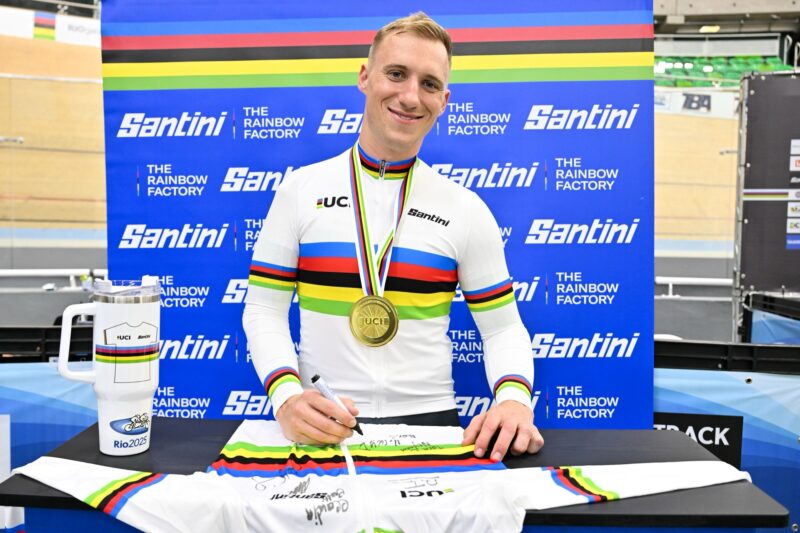
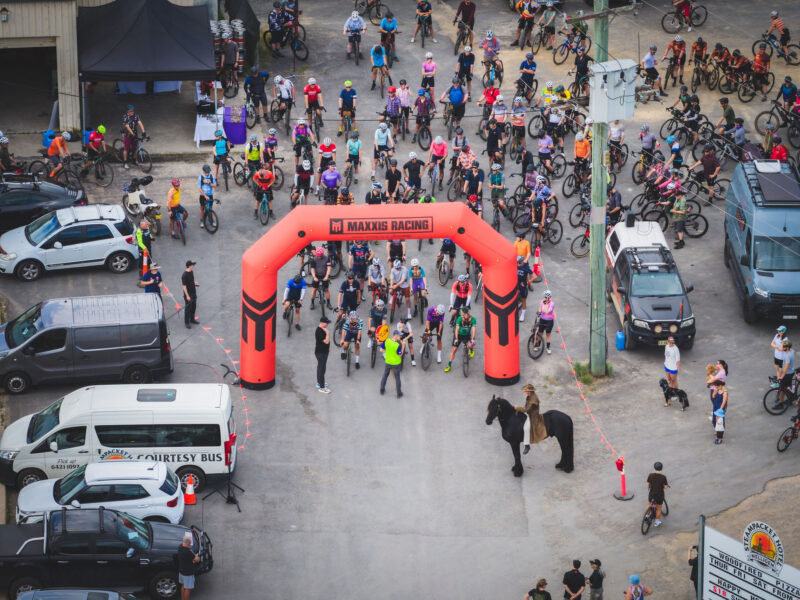

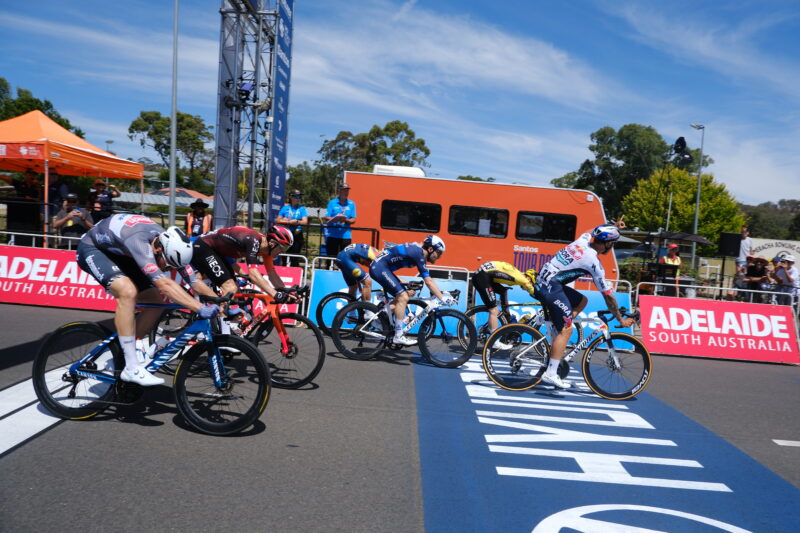
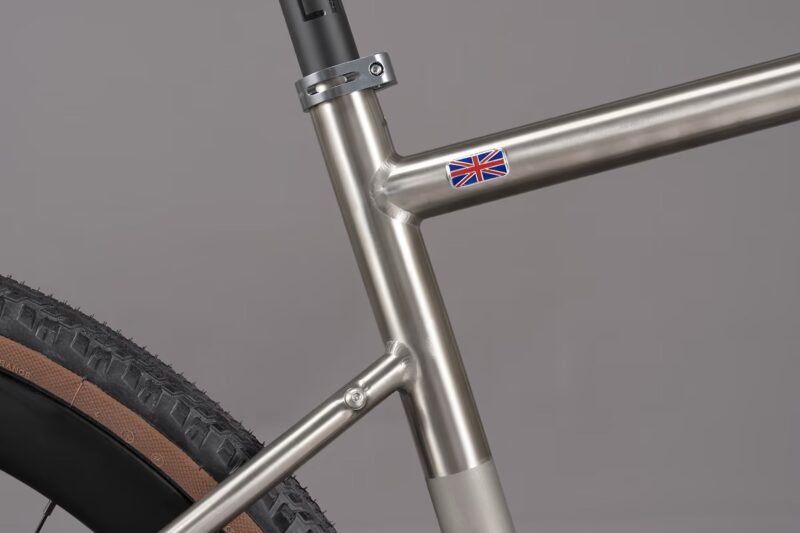

Well I thoroughly enjoyed it and was able to finish it about 43minutes faster than 3 Peaks Falls Creek in 2013 (11hrs & 23sec in Tassie). I will be 70 this December so was thrilled to be able ride 3 Peaks Tassie in cool conditions compared to Falls Cr nearly 3 years ago in 35+deg on the flatter stages. The descending in mist and drizzle at about 90km was tough but the rest wasn’t too bad. Rest stops could have been better named – I missed the 1st valet stop – as I was looking for the name Mayberry which was not displayed. The fast last 30 km were fantastic with the undulating down hill with a tailwind! Have successfully entered 3 Peaks Falls Cr for 2016 as I will now be a 70 year old!
Good recap!
Many of the early parts are a bit of a blur to me, so it’s great to see a summary like this.
I did Gold Coast this year, and in comparison, Cradle Mountain was harder (particularly because of the distinct lack flat bits), but also a better ride… The scenery was far more spectacular, there were no stops for lights/traffic, and the road quality was better on average.
Such a satisfying ride, and I’m looking forward to completing the trilogy with Falls Creek some time in the future!
Yes what a ride. My Strava read 5200
I Would love to know the real vertical
But maybe next year we can leave Spellmans out to bring it in line with the others
Here’s hoping but fat chance as that was the highlight of the day. And how many people walked it, would make another good statistic